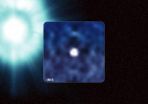(Press-News.org) CAMBRIDGE, Mass. -- For 50 years, the transistors on computer chips have been getting smaller, and for 50 years, manufacturers have used the same technique — photolithography — to make their chips. But the very wavelength of visible light limits the size of the transistors that photolithography can produce. If chipmakers are to keep shrinking chip features, they'll probably need to turn to other manufacturing methods.
Researchers have long used a technique called electron-beam (or e-beam) lithography to make prototype chips, but standard e-beam lithography is much slower than photolithography. Increasing its speed generally comes at the expense of resolution: Previously, the smallest chip features that high-speed e-beams could resolve were 25 nanometers across, barely better than the experimental 32-nanometer photolithography systems that several manufacturers have demonstrated. In a forthcoming issue of the journal Microelectronic Engineering, however, researchers at MIT's Research Laboratory of Electronics (RLE) present a way to get the resolution of high-speed e-beam lithography down to just nine nanometers. Combined with other emerging technologies, it could point the way toward making e-beam lithography practical as a mass-production technique.
The most intuitive way for manufacturers to keep shrinking chip features is to switch to shorter wavelengths of light — what's known in the industry as extreme ultraviolet. But that's easier said than done. "Because the wavelength is so small, the optics [are] all different," says Vitor Manfrinato, an RLE graduate student and first author on the new paper. "So the systems are much more complicated … [and] the light source is very inefficient."
Visible-light, ultraviolet and e-beam lithography all use the same general approach. The materials that compose a chip are deposited in layers. Every time a new layer is laid down, it's covered with a material called a resist. Much like a piece of photographic paper, the resist is exposed — to either light or a beam of electrons — in a carefully prescribed pattern. The unexposed resist and the material underneath are then etched away, while the exposed resist protects the material it covers. Repeating this process gradually builds up three-dimensional structures on the chip's surface.
The main difference between e-beam lithography and photolithography is the exposure phase. In photolithography, light shines through a patterned stencil called a mask, striking the whole surface of the chip at once. With e-beam lithography, on the other hand, a beam of electrons scans across the surface of the resist, row by row, a more time-consuming operation.
One way to improve the efficiency of e-beam lithography is to use multiple electron beams at once, but there's still the problem of how long a beam has to remain trained on each spot on the surface of the resist. That's the problem the MIT researchers address.
The fewer electrons it takes to expose a spot on the resist, the faster the e-beam can move. But lowering the electron count means lowering the energy of the beam, and low-energy electrons tend to "scatter" more than high-energy electrons as they pass through the resist, spreading farther apart the deeper they go. To reduce scattering, e-beam systems generally use high-energy beams, but that requires resists tailored to larger doses of electrons.
Manfrinato, a member of RLE's Quantum Nanostructures and Nanofabrication Group, and group leader Karl Berggren, the Emanuel E. Landsman (1958) Associate Professor of Electrical Engineering and Computer Science — together with professor of electrical engineering Henry Smith, graduate students Lin Lee Cheong and Donald Winston, and visiting student Huigao Duan, all of RLE — used two tricks to improve the resolution of high-speed e-beam lithography. The first was to use a thinner resist layer, to minimize electron scattering. The second was to use a solution containing ordinary table salt to "develop" the resist, hardening the regions that received slightly more electrons but not those that received slightly less.
Pieter Kruit, a professor of physics at the Delft University of Technology in the Netherlands and co-founder of Mapper, a company that has built lithographic systems with 110 parallel e-beams, says that in addition to being faster, e-beam systems that deliver smaller doses of electrons are much easier to build. The larger the dose of electrons, the more energy the system consumes, and the more insulation it requires between electrodes. "That takes so much space that it's impossible to build an instrument," Kruit says.
Kruit doubts manufacturers will use exactly the resist that the MIT researchers did in their experiments. Although the researchers' goal was to find a resist that would respond to small doses of electrons, the one that they settled on is actually "a little bit too sensitive," Kruit says: The amount of electricity that an electrode delivers to a chip surface will vary slightly, he explains, and if the resist is too sensitive to those variations, the width of the chip features will vary, too. "But that is a matter of modifying the resist slightly, and that's what resist companies do all the time," he adds.
###
Written by Larry Hardesty, MIT News Office
END
McCusker & Company, a leading nationwide developer of warranty protection solutions for the commercial and consumer electronics industry, is proud to announce the addition of Neal Rutherford to the management team as the new Director of Business Development. Rutherford brings to his role more than 20 years of diverse sales and marketing experience.
"Neal Rutherford is an outstanding addition to our rapidly expanding company," said McCusker & Company President Will L. McCusker. "He adds additional depth of extended warranty sales and relationship ...
EAST LANSING, Mich. — Evolutionary adaptation is often compared to climbing a hill, and organisms making the right combination of multiple mutations – both good and bad – can become the king of the mountain.
A new study published in the Proceedings of the Royal Society B by BEACON researchers at Michigan State University suggests that the combined effect of multiple mutations working together can speed up this process. Through computer simulations, researchers at BEACON, a National Science Foundation-funded Science and Technology Center at MSU, were able to watch evolution ...
A study by Columbia Business School Professor Sheena Iyengar, S. T. Lee Professor of Business, Management, and Emir Kamenica, Associate Professor of Economics, University of Chicago Booth School of Business, found the more fund options an employee has to choose from when presented with 401k options deters he or she from enrolling in the plan. The professors conducted three experiments in order to determine how increasing the size of a choice set will impact the option the consumer will chose, evolving from earlier studies that have focused on whether increasing the number ...
ESA's Integral gamma-ray observatory has provided results that will dramatically affect the search for physics beyond Einstein. It has shown that any underlying quantum 'graininess' of space must be at much smaller scales than previously predicted.
Einstein's General Theory of Relativity describes the properties of gravity and assumes that space is a smooth, continuous fabric. Yet quantum theory suggests that space should be grainy at the smallest scales, like sand on a beach.
One of the great concerns of modern physics is to marry these two concepts into a single theory ...
29.06.2011 | Potsdam: The "Potsdam Gravity potato", as this representation of terrestrial gravity has become known, can for the first time display gravity variations that change with time. The seasonal fluctuations of the water balance of continents or melting or growing ice masses, i.e. climate-related variables, are now included in the modeling of the gravity field. "EIGEN-6C" is the name of this latest global gravity field model of the GFZ German Research Centre for Geosciences. It was recently calculated in Potsdam in cooperation with the Groupe de Recherche de Géodésie ...
(Boston) - Researchers from Boston University School of Medicine (BUSM) using a traditional Korean medicine, SO-CHEONG-RYONG-TANG (SCRT) that has long been used for the treatment of allergic diseases in Asia, found that SCRT treatment alleviates asthma-like pulmonary inflammation via suppression of specific chemokines or proteins. These findings appear online in the Annals of Allergy, Asthma & Immunology.
Asthma is a unique form of chronic respiratory disease characterized by reversible airway obstruction and pulmonary inflammation. It represents one of the most common ...
London, the capital city of the UK, boasts of a wide range of hotels to its credit. There is a wide range of hotels near London that ranges from cheap to luxury.
The hotels make the city a highly desired place among the tourists as well as business travellers. Among the various hotels located near the city the one that acts as an ideal destination for guests is the Lancaster gate accommodations. It is one of the premier hotels in the city that can be easily accessed from different parts of the city. There are a number of tourists attractions located close to the hotel. ...
Whataburger today announced that effective January 1, 2012, current President and Chief Operating Officer Preston Atkinson will assume the responsibilities of Chief Executive Officer. Tom Dobson will continue his role as Chairman of the Board of Directors.
"For years, Preston has been a trusted partner and friend in my journey as a leader in this company," said Chairman and CEO, Tom Dobson. "His guidance has helped Whataburger grow into a strong, stable and successful burger brand. I am fully confident in Preston's leadership and his ability to carry ...
BELECTRIC Solarkraftwerke GmbH is ensuring sustainable development of conversion real estate with the official commissioning of the Wildflecken solar power plant on 24 June 2011. "This brings the grounds' military history - the army was present here until 1998 - to a close. The site is now designated for sustainable and innovative use," said Alfred Schrenk, mayor of Wildflecken. BELECTRIC can provide 158 four-person households per year with solar energy from the first ground-mounted solar power plant fitted with Solar Frontier CIS (copper, indium, selenium) thin-film ...
Imaginet International Inc, the leading systems integrator and managed network hosting and content security services provider in the Philippines, recently participated in the ICS/Lotus Top Gun Training Schedule last May 23-27, 2011, at Bangkok Thailand.
The IBM Collaboration Solutions (ICS) Top Gun (Lotus Software) focuses on understanding the business value of clients, and learning how to weave that value into client-satisfying solutions. Product and sales experts guide participants through an exploration of how to position these offerings to maximum advantage. From ...



